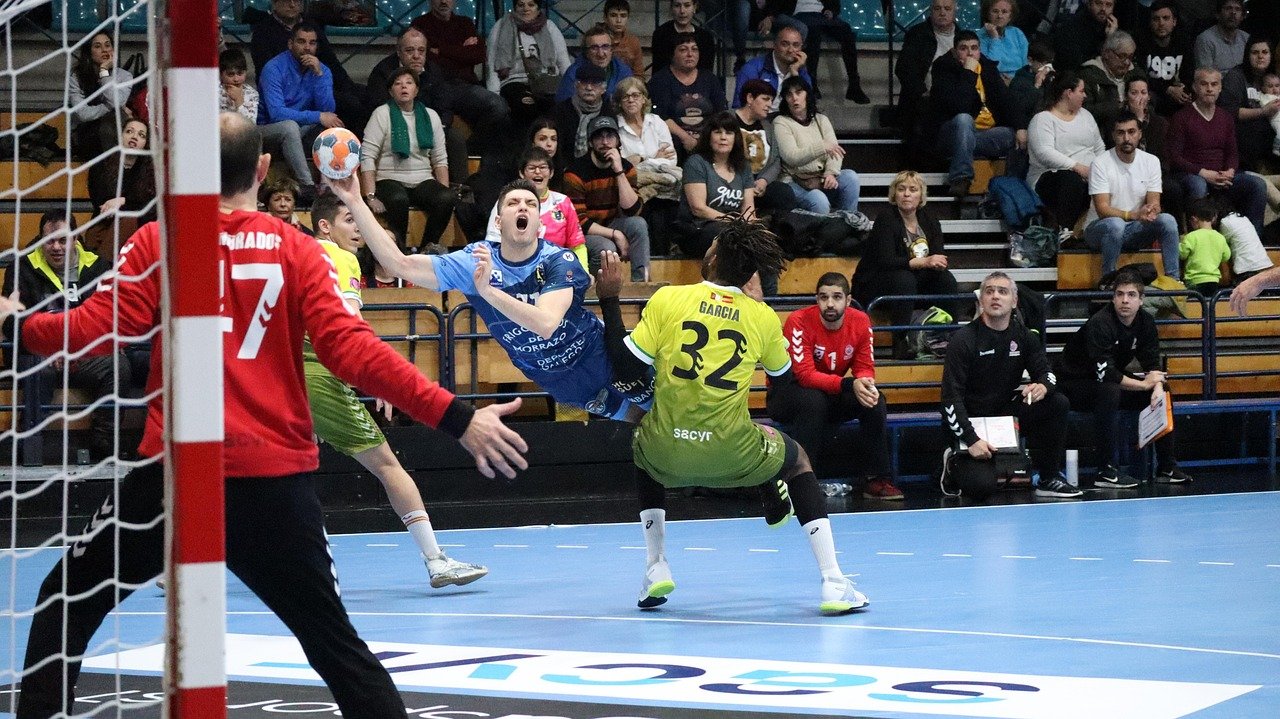The 4-2 defence in handball is a versatile and aggressive defensive formation designed to disrupt attacking play and force mistakes. While not as commonly used as more traditional defensive systems, it can be highly effective when executed with precision and teamwork. This guide will take you through its structure, tactical approach, advantages, drawbacks, and practical tips for implementation.
Understanding the 4-2 Defence Structure
In the 4-2 defence, four defenders form a compact back line near the 6-metre line, while two more advanced defenders position themselves further out to challenge attackers early. The idea is to pressure the opponent’s playmakers before they can initiate structured attacks, forcing hurried passes and poor shot selections.
The two advanced defenders typically mark the central backs and one of the half-backs, while the back line focuses on covering pivots, wingers, and preventing breakthroughs. The system requires excellent communication and coordination between all players, as the advanced defenders must time their movements to avoid leaving large gaps behind them.
Key Roles and Responsibilities
Advanced Defenders (Front Two)
- Press the opposing playmaker and one backcourt shooter to limit their options.
- Intercept passes and block shooting lanes early.
- Apply physical pressure to disrupt rhythm and force turnovers.
- Quickly recover to help the back line if an opponent breaks through.
Back Four Defenders
- Maintain a solid wall near the 6-metre area to protect the goalkeeper.
- Cover pivots and react to wing attacks.
- Step forward when the ball approaches their zone but remain compact to prevent gaps.
- Communicate constantly with the front two to anticipate overlaps and switches.
Strengths of the 4-2 Defence
- Early Disruption: The advanced defenders engage attackers before they can organise an effective offensive structure.
- Turnover Potential: Increased pressure on passing lanes leads to more interceptions and fast-break opportunities.
- Flexibility: Can be adapted into other formations (like a 5-1 or 3-2-1) mid-game depending on the situation.
- Psychological Pressure: Forces opponents to play under constant duress, often leading to rushed decisions.
Weaknesses and Risks
- Space Behind Advanced Defenders: Poorly timed challenges can leave large gaps that attackers exploit.
- High Physical Demand: Requires strong stamina from the front two due to constant movement and pressing.
- Vulnerability to Quick Passing: Teams with precise ball movement can bypass the pressure and find unmarked players.
- Coordination Dependent: Miscommunication can quickly lead to defensive breakdowns.
Tactical Tips for Executing the 4-2 Defence
- Synchronised Pressing: The two advanced defenders must move together and adjust their positions according to the ball’s location.
- Cut Off Passing Lanes: Position your body to make straight passes difficult, forcing opponents into riskier cross-court passes.
- Support from the Back Line: The back four should step forward when the front two engage, preventing attackers from finding easy central gaps.
- Quick Transition: Upon winning possession, immediately push for a fast break to capitalise on the opponent’s disorganisation.
- Vary Intensity: Occasionally drop into a 6-0 or 5-1 shape to confuse the attacking team and prevent them from settling into a counter-strategy.
Training Drills for the 4-2 Defence
- Two-on-Two High Press Drill: Focuses on front defenders working in pairs to close down playmakers.
- Passing Interception Exercises: Trains anticipation and reaction times for stealing passes.
- Compact Wall Drill: Helps the back four maintain shape while reacting to lateral ball movement.
- Switching Formation Practice: Improves team adaptability between 4-2, 5-1, and 6-0 systems mid-play.
When to Use the 4-2 Defence
The 4-2 defence is most effective against teams that rely heavily on backcourt playmakers. By denying these players time and space, you disrupt their offensive rhythm. It’s also a good choice when you have athletic and tactically disciplined defenders who can sustain high-intensity pressure.
However, against teams that favour fast ball circulation and wing attacks, you may need to adjust or combine the 4-2 with other formations to prevent overloads on the flanks.
Conclusion
The 4-2 defence in handball is a high-risk, high-reward system that can completely destabilise an opponent’s offence when executed correctly. It demands strong communication, sharp anticipation, and exceptional conditioning. By mastering the timing of your presses, maintaining compactness in the back line, and adapting quickly to the flow of the game, your team can turn the 4-2 defence into a powerful tactical



